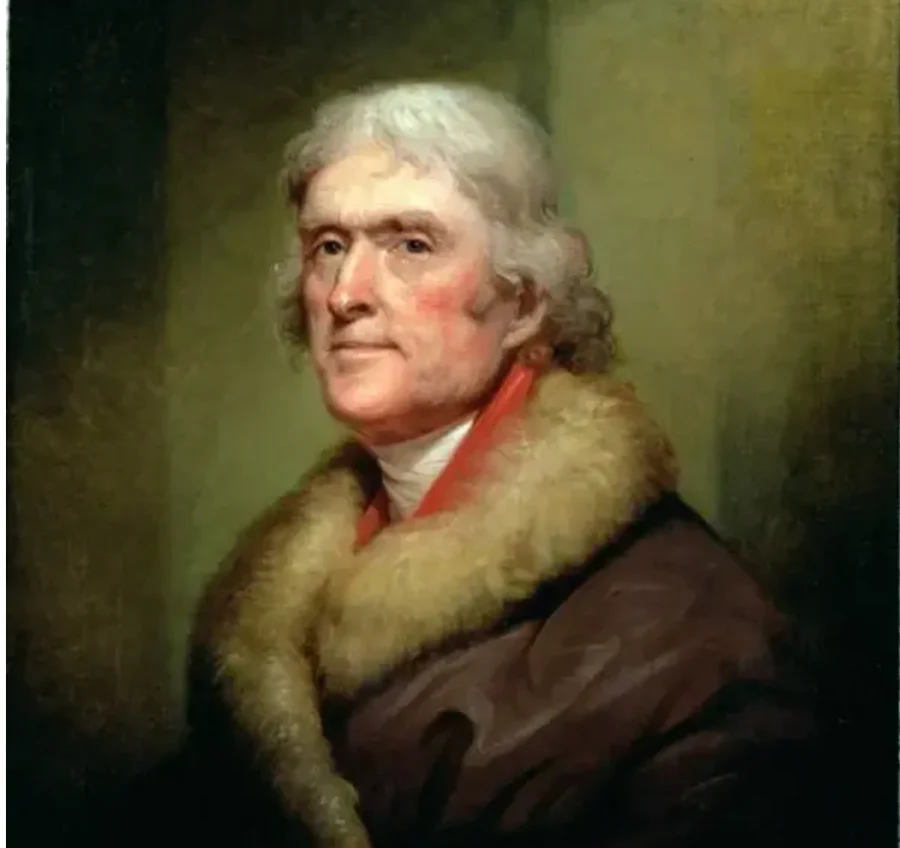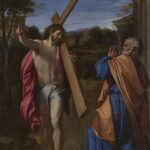
Published December 11, 2023
Polish nobleman Thaddeus Kosciuszko contributed to the American Revolution in many ways. He also contributed Catherine the Great’s coat to Thomas Jefferson.
As coat season is upon us, I’m reminded of what could be the most interesting coat in all of history.
All of us have seen it before, the fur coat wrapped aristocratically over the shoulders of Thomas Jefferson in an official portrait painted by Rembrandt Peale.
The fur coat was a gift to Thomas Jefferson by his devoted friend, Thaddeus Kosciuszko. Kosciuszko was an idealistic Polish young man who learned well at the knee of his gentry-class father. The father instilled firmly into his son the belief that serfs were entitled to some autonomy and freedom, even though his convictions cost him financially.
Kosciuszko studied engineering in Poland and then France. He was forced to leave Poland when an elopement was thwarted by the bride’s angry father, who threatened to have the young cadet killed. Brokenhearted and fearing for his life, Kosciuszko made his way to the American colonies. He arrived a month after the signing of the Declaration of Independence, presenting himself without any papers of recommendation at the door of Benjamin Franklin in Philadelphia. Franklin quickly sized up the man and realized he could be an asset to the burgeoning American Revolution.
How an Empress’s Coat Found Its Way to Jefferson
Kosciuszko, through his engineering expertise, would become a good friend to George Washington and a true asset in the Revolutionary War. He would make history not just in his military prowess, but also as the man who designed the blueprints sold by Benedict Arnold to the British.
After the American Revolution, Kosciuszko returned to Poland to fight the second partitioning of his native country. Named commander-in-chief of the military, he successfully set up a provisional government of free Poland. Fighting against Russian troops, Gen. Kosciuszko was shot off of his horse and was captured by the Russian army in October 1794.
Gen. Kosciuszko became a prisoner of Catherine the Great, who considered him a mortal enemy. But as fate would have it, Cate died while the Polish general was rotting in her prison in November 1796. Her son, Pavel, succeeded her. But Pavel didn’t quite see things the way his mother had. The new czar hated Catherine because she had wrested the rule of Russia from her husband. Not only did Pavel release Gen. Kosciuszko from prison, but he outfitted him for a proper winter in one of Catherine’s fur coats. Kosciuszko wore the coat out of Russia and across the European continent as he traveled back to the United States and to Jefferson’s home, Monticello.
While at Monticello, Catherine the Great’s fur coat was passed from Kosciuszko to his friend Thomas Jefferson.
Upon his death, Kosciuszko left a large amount of money to Jefferson to pay for the freeing of his slaves. Tragically, Jefferson did not honor his intention and the money was eventually frittered away by an unworthy son of one of the executors of the sizable sum.
Kosciuszko has been immortalized in Poland in the Kosciuszko Mound in Krakow, where he is buried. His name dots our own country with a statue of him in Lafayette Park in front of the White House, numerous memorials, and towns, roads, and even a bridge named after him. But we can remember him now every time we see his presidential friend sporting his storied coat.
Carrie Gress, Ph.D., is a Fellow at the Ethics and Public Policy Center, where she co-directs EPPC’s Theology of Home Project. She earned her doctorate in philosophy from the Catholic University of America and is the co-editor at the online women’s magazine Theology of Home.













